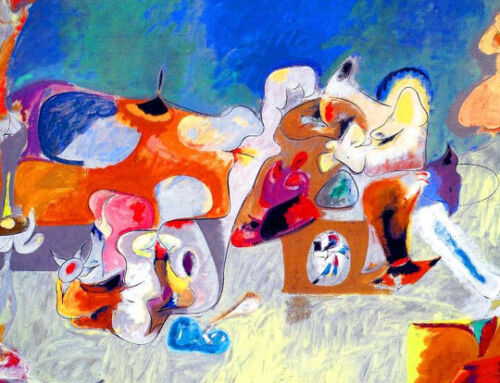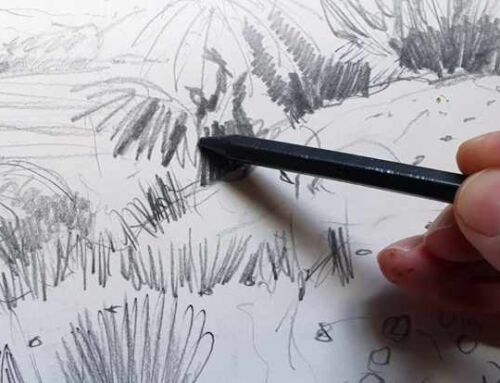If you are into art you need know the difference between working from what is seen, or from what is known
An Artistic Dilemma
Many artists will strive to capture what they see in front of them and render it in pencil or paint. Some may interpret what they see in slightly different ways, others will discard their paintings or drawings if they ‘don’t look right’. This is a very strange approach to painting and drawing. Especially, when you consider that what we see isn’t ‘real’.
Scientist’s tell us the sky is actually colourless. It is not blue, our brains ‘interpret’ the sensation of clashing electrons in our atmosphere as blue. ( I am not a scientist, so please excuse the terminology). People appear to get smaller the further away they happen to be, but they don’t actually shrink. Train lines appear to come together as they recede into the distance, but they don’t actually get narrower. What we see isn’t what we know. Our brain conditions us to ‘see’ the world in a particular way. Wouldn’t it be interesting if, for a change, we drew what we know and not what we see?
Artists have painted what they know for centuries
Picasso famously said, ‘I don’t paint what I see, I paint what I know.’ So imagine creating a painting of people where their sizes are not influenced by how close they might be to viewer. Imagine a picture where buildings do not get smaller because they happen to be further away. Scrap the use perspective to draw a road narrowing as it recedes into the distance, but draw the road parallel.
Imagine how different painting would be. Painting or drawing the world as we see it is a very western approach to drawing and painting. It is not the case in eastern art. Before the dominance of western influence, art saw the world in the east very differently.
Have you ever noticed that drawings and paintings of figures in traditional Chinese art never have shadows on the faces. We draw the shadows on a face, but they are transitory and dependent on light. The colour of our face doesn’t actually change, it is light that makes it appear to change. So the Chinese are drawing/painting what they know not what they see. Notice in the paintings above how everything is painted ‘flat’ there is no attempt to make the image appear 3D. The surface on which the painting is produced is flat, so the painting is not trying to be something it is not.
What I am really saying here is that ‘real’ means different things to different people. The way we all interpret colour, emotions, feelings and the visual world can vary considerably. So why stick with what is seen, why not try painting and drawing what you know and challenge your perceptions. What you see or what you know?






That’s an interesting idea that I had never thought about. I generally don’t enjoy looking at traditional Chinese art however I saw a group of figures “eight pieces of the brocade” or “ba duan Jin” (sorry don’t know the artist) where each figure was made with just a few brush strokes. It gave a feeling of movement or the essence of the exercise.
This then got me to thinking “what you feel” rather than what you see. I remembered then “the homonculus” with the large face and hands.
Really thought provoking and challenging. Thank you for the post and making me think
John
This is what makes art so wonderful. Most people are so concerned about what art should look like, they miss how it can make us feel. Cheers
‘What you see or what you know?’ Most drawing instructors emphasize the ‘what you see’ concept. Many new art students are so preoccupied with making their drawing look like what they feel it’s supposed to be, they don’t capture the essence of their subject. There’s something to be said for both ideas. Thank you for an interesting post.
Agreed, You are very welcome.